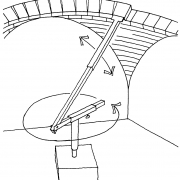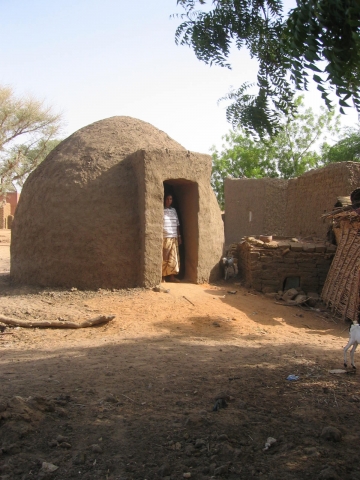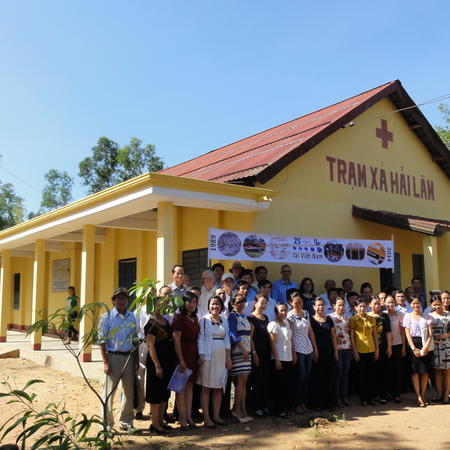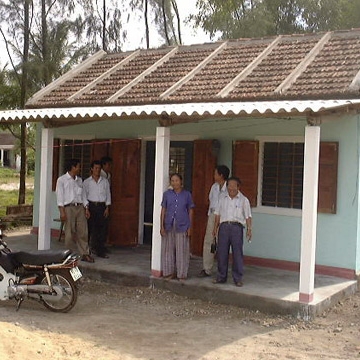- English
- Français
- Tiếng Việt
The dome
The dome
The dome is built withut any supporting shuttering with small mud bricks laid in a mud mortar.
The basic dome shape used in the Egyptian building tradition is hemispherical. Horizontal, concentric courses of unstabilized mud bricks are laid first at a shallow angle and then more sharply inclined as one builds the concentric


To build a dome made up of con centric circles of bricks on a rectangular base requires using one of two techniques: either building pendentives, which are the spherical tri angles formed at the inter section of the lower part of a dome with the corner formed by two walls; or building squinch arches, i.e. arches that bridge across the interior angle formed by two walls, and over which the curved based of the dome can be built. Pendentives are much easier for a novice builder to construct, as each brick can be positioned with the radial guiding arm. The hemispherical dome shape produces external thrust in the lower part of the structure, which does not suit the use of unstabilized earth bricks. Like the vault, the same concern applies – sending the forces of a dome down to the ground. One can help achieve this by lowering the spring point of the dome and making the angle of the dome sides steeper. In the Woodless Construction Programme the pivoting position of the guiding arm is displaced away from the centre of the dome, so that the base of this guide rotates round the central post, not on it. The modified dome shape is stronger, and without lowering the over all height of the roof, the spring point is lower. The mobile guide is the one piece of equipment that trainee builders are given, although simple domes can still be built with out it using the centrally placed wire.
Several domes together, or a combination of vaults and domes, can be used to create varied and interesting forms and interior spaces. Both domes and vaults should be covered with a second layer of bricks, laid flat in mortar, and in areas with higher rainfall, various additional layers of protection can be added. The roof can also be flattened.











